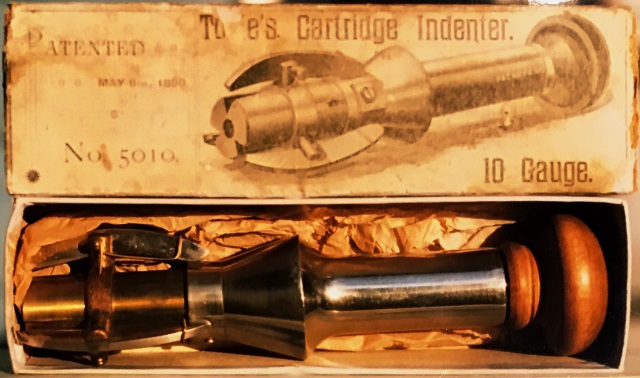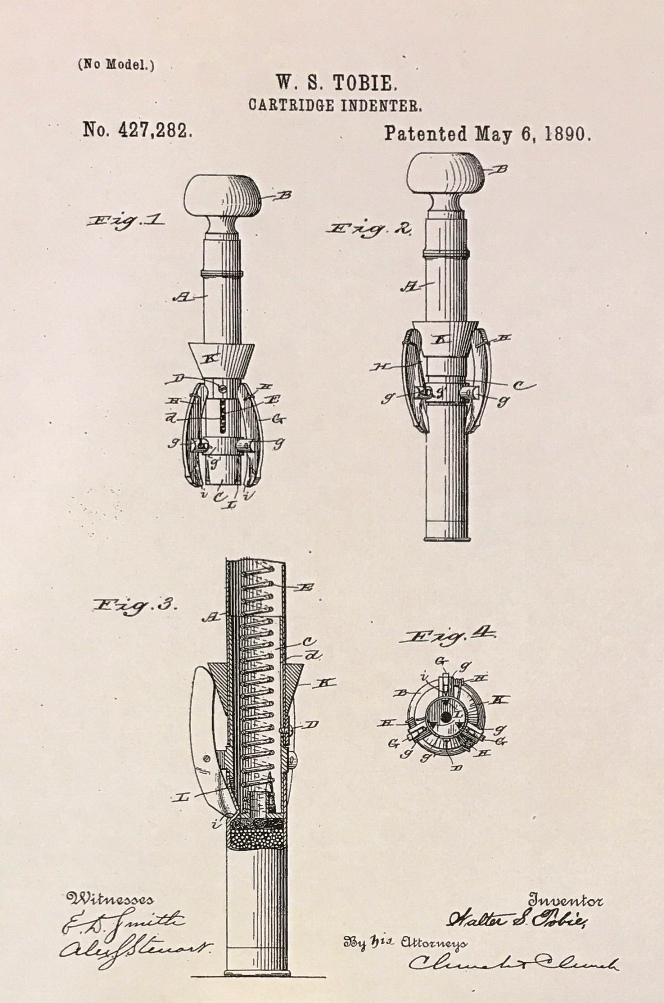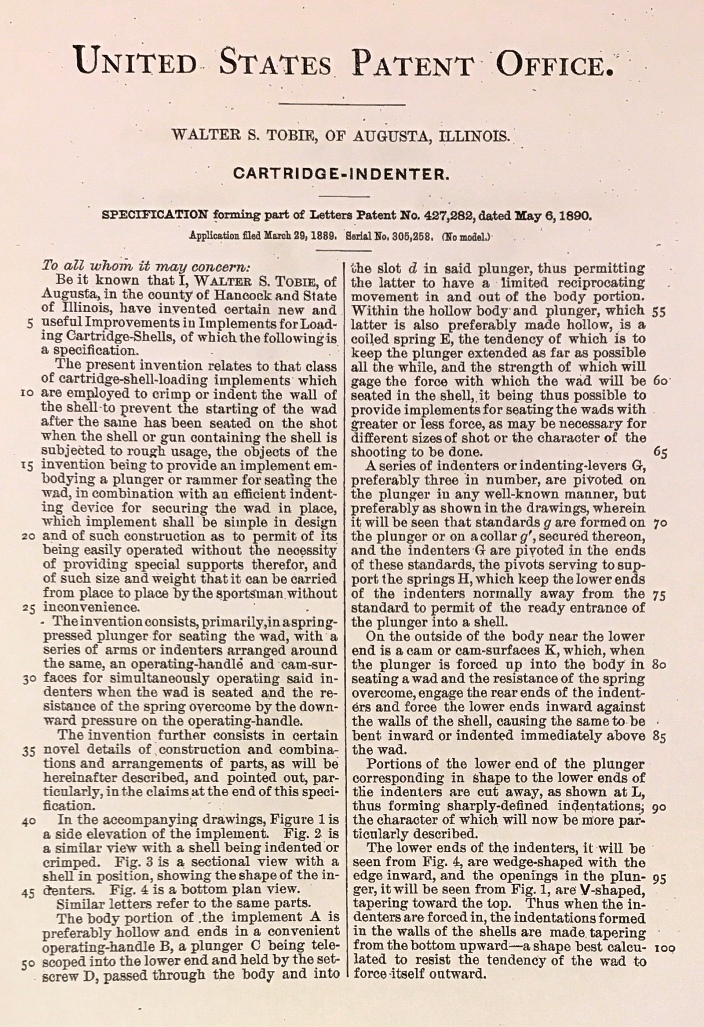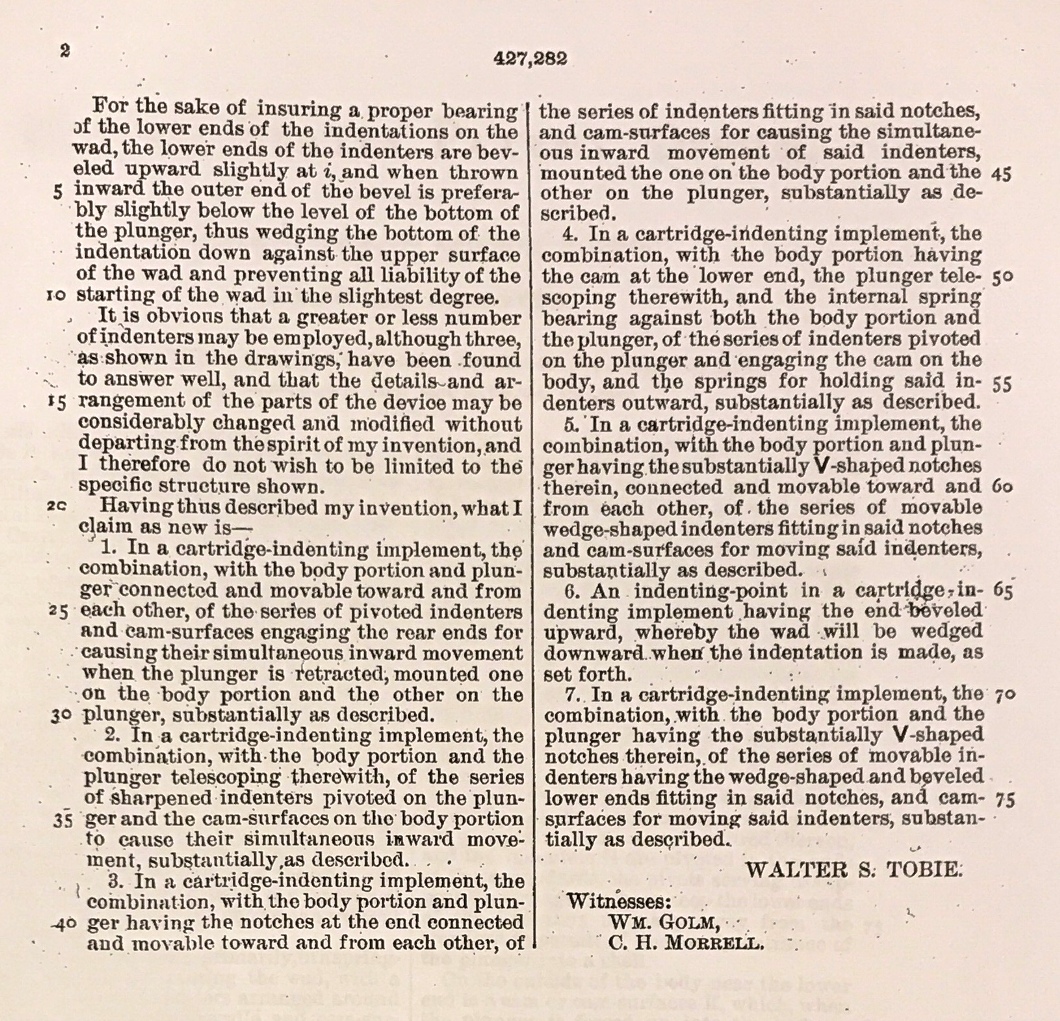- |
THE CARTRIDGE COLLECTOR'S EXCHANGE |
||
|
|
Home of the Old Ammo Guy's Virtual
Cartridge Trading Table
Picture Page May 2019
Please note: Unless otherwise indicated, the pictures on this web site are my property, and should not be used by anyone without crediting the source. Vintage Shotshell Loading Paraphernalia, Pt 3....... The Peters Patented Indented Crimp & Tobies Indenter
The Peters Cartridge Company advertisement shown below is from the April 11th, 1889 Forest & Stream magazine. It shows two shotshell 'crimping' methods that the
company was using at the time, the conventional roll crimp,
where the mouth of the shell hull is rolled inward on itself to hold the top wad
securely in place, and their new indented crimp that used three indentations
in the wall of the hull just above the top wad to accomplish the same purpose.
This indented crimp was advertised as producing less recoil than the
conventional roll crimp. I suspect the downside of the indented crimp was
that, because the indentations produced cuts in the sides of the hull and
pushed the cut portion inward over the edge of the top wad in order to hold
it in place, the force of
The 10 gauge "Special" shotgun shell box shown here was produced by the Peters Cartridge Company around 1888 or 1889. It is one of a limited number of boxes of Peters indented shells that were produced in the year or so that they were in production, and is the only one that I'm aware of that has survived. I obtained this box in early 1997 from an antiques picker; it was part of a virtual time capsule of pre-1900 shotshell reloading supplies and tools that were packed in a wood crate found in the attic of a home in Hannibal, Missouri. I sold this Peters box late that same year and have at times had regrets, as is often the case when I let go of something unique, as this box certainly is. .
. Barely visible on
the illustration of the indented shell in the Field & Stream advertisement
and below the indented shell on the Peters 'SPECIAL' shotshell box are four
patent dates, May 27, 1884, March 29, 1887, April 10, 1888, and June 5,
1888. The May 27, 1884 patent was for a crimp consisting of only two
indents, which proved unsatisfactory and was soon replaced by the three
indent crimp covered by the April 10, 1888 patent. The other two patents
were for the reloading machines that
Examples of indented crimp shells produced by Peters are quite rare, as Thomas Schiffer pointed out in his book Peters & King, The Birth & Evolution of the Peters Cartridge Co. & the King Powder Co. Because Peters was not yet producing their own shotgun shells for loading during the short time period they were employing the indented crimps, the shells they used were the STAR brands as produced by the Union Metallic Cartridge Company and the Winchester Repeating Arms Company.
The shells shown in the photo to the left from Schiller's book are of the Peters three indent style. According to him these two shells are the only ones known to exist that were produced by Peters, and no examples of the two indent shells are known to exist. Shotshell collectors should be on the lookout for examples of these indented shells whenever sorting through an accumulation of vintage shells.
The photo below shows an interesting and somewhat complicated shotshell loading device, the Tobie's Cartridge Indenting tool. It was patented May 6th, 1890 by Walter S. Tobie of Augusta, Illinois, and produced a three indent shotshell crimp like that patented by Peters. While this device would appear to infringe on the Peters three indent patent, Tobie's specifications that accompany his patent (shown below along with the patent drawing) state that his 'invention relates to that class of cartridge-shell-loading implements which are employed to crimp or indent the wall of the
shell to prevent the starting of the wad after the same has been seated on the shot when the shell or gun containing the shell is subjected to rough usage, the objects of the invention being to produce an implement embodying a plunger or rammer for setting the wad, in combination with an efficient indenting device for securing the wad in place, which implement shall be simple in design and of such construction as to permit of its being easily operated without the necessity of providing special supports therefore, and of such a size and weight that it can be carried from place to place by the sportsman without inconvenience". In other words, unlike the patented Peters progressive loading machines, his invention was a portable hand held device that was intended only to seat and secure the top wad, and just happened to also produce three indents to hold the top wad in place.
The apparent lack of concern by Peters about Tobie's Cartridge Indenter may also have had something to do with timing. On July 15, 1890, thirty nine days after Tobie was issued his patent, the Peter's Cartridge Company's production facilities were completely destroyed by an explosion and fire that were the result of negligence on the part the Pittsburgh, Cincinnati, Chicago and St. Louis Railway. Needless to say, the Peters lawyers' attention would have been on other more pressing matters in the months that followed the explosion.
. . .
. . .
. .
Sources: Peters shotgun shell advertisement advertisement, Forest & Stream - A Weekly Journal, April 11, 1889, Volume XXXII, number 12, Page 251, No 318, Broadway, New York, NY
Peters Indented shotgun shells, Peters & King, The Birth & Evolution of the Peters Cartridge Co. & the King Powder Co., Thomas D. Schiffer, page 217, Krause Publications, 700 E. State Street, Iola, Wisconsin, 54990, 2002.
Tobies patent 427,282 from United States Patent and Trademark Office using Google Patents, https://patents.google.com
Peters indent patents 299,162 and 380,689 from United States Patent and Trademark Office using Google Patents, https://patents.google.com . . . . .
|

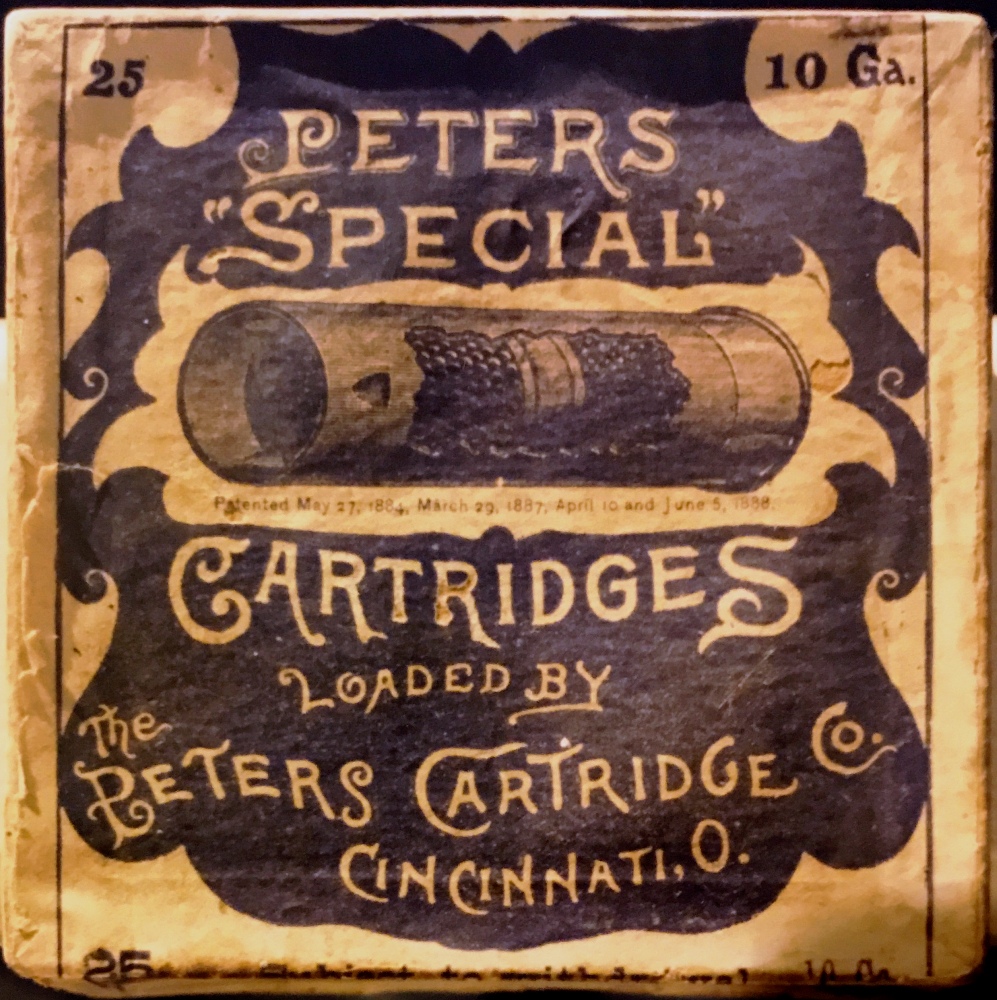 the
wad
being
blown out of the shell upon discharge tore off a small portion of the hull
at each of the indentations resulting in a shell that was unsuitable for reloading
after only one or two uses.
the
wad
being
blown out of the shell upon discharge tore off a small portion of the hull
at each of the indentations resulting in a shell that was unsuitable for reloading
after only one or two uses. 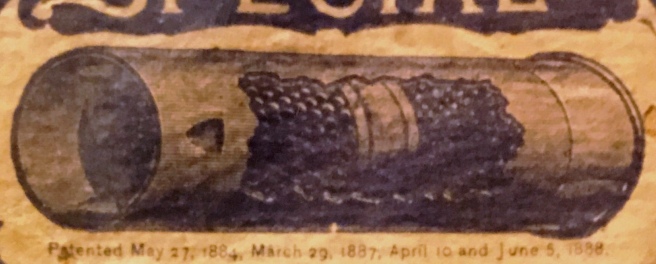
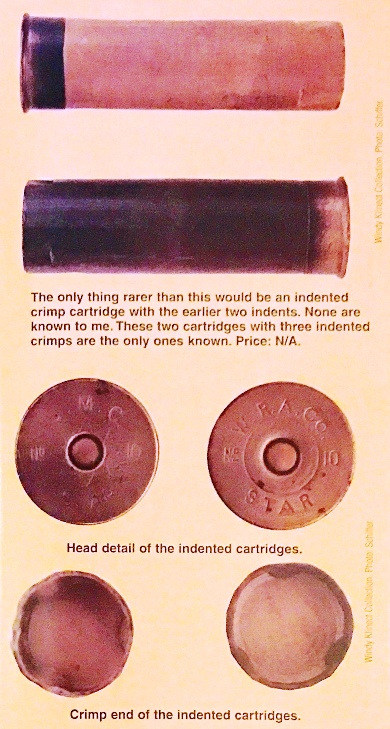 included
the mechanisms for producing the two and three indent crimps, in addition to
all the other progressive functions required to load a shell.
included
the mechanisms for producing the two and three indent crimps, in addition to
all the other progressive functions required to load a shell. 